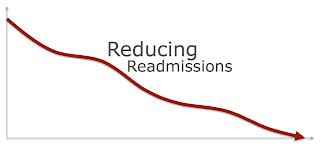 October 1st of last year, CMS cracked down on readmission rates for hospitals nationwide, handing out millions of dollars in penalties. The Affordable Care Act put these measures into place in order to curb the problem of readmissions, which are not only costly, but reflect an overall poor population health in the U.S. – especially for those patients with chronic conditions.
October 1st of last year, CMS cracked down on readmission rates for hospitals nationwide, handing out millions of dollars in penalties. The Affordable Care Act put these measures into place in order to curb the problem of readmissions, which are not only costly, but reflect an overall poor population health in the U.S. – especially for those patients with chronic conditions.
For FY ‘14, 2% was withheld from payments per the guidelines for penalties. By 2015, the rate of withholding for penalties is expected to top 3%. In addition to the higher payments, there will also be additional diagnoses included in the readmission criteria list – it began with heart attacks, pneumonia and heart failure and will now expand to include COPD and complications from chronic lung conditions.
The readmission reduction program has been the subject of controversy since it was conceptualized, when almost immediately healthcare experts began asserting that it wouldn’t be successful. The concern has long been that hospitals will be penalized for readmissions that were entirely unavoidable – a concept itself that is becoming more and more narrow. Even readmissions that were not brought about because of in-hospital care slip ups often times could have been avoided through care coordination and follow-up, two areas of main focus for CMS moving forward.
The timeline for readmissions is 30 days post-discharge – which further implicates lack of proper follow-up as a likely source behind higher rates. What many experts agree may be even more damaging to a hospital than the financial penalty of readmissions is the “reputation” that comes along with it when the number is released for public consumption: while the financial burden might be quietly absorbed by the hospital, since those rates will be accessible to patients and families, hospitals that are incurring high readmission rates aren’t just losing money from penalties – but perhaps, from lost opportunities. Patients are getting smarter and thriftier about their healthcare, and healthcare as a business is more competitive than ever. So to this further exemplifies the value of care coordination and follow-up not just to healthcare systems, but to patients: a patient that emerges from the hospital and has zero or subpar follow-up is not only more likely to re-enter the hospital, but they’re also more likely to report a poor hospital experience – even if their time in the hospital was actually pretty good. Follow up does matter – not just to physicians and hospitals, but to patients and families, especially those who have chronic illnesses. Information technology and telehealth may lend itself to making care coordination and follow-up more intuitive for both patients and hospitals, but there are many roadblocks that must be overcome before we can expect to rely on it. In the meantime, for many patients, the difference between a readmission, or a report of poor experience, is a quick post-discharge phone call. For others who are more technically savvy, a “call if you have any concerns or questions” email or text is another option, and it can be done by a physician or nurse while they’re standing in line to grab a cup of coffee. Everyone in the hospital, particularly emergency rooms, are strapped for time and anything that makes care coordination possible, seamless and ideally, almost effortless, will be heaven-sent.
The reality is, no matter what changes are made, there aren’t going to be any shortcuts. If hospitals want to reduce their readmissions and improve their patient satisfaction measures, while avoiding financial penalties, they’ll have to put in the hard work. But if they’re smart, they won’t try to go it alone. One thing that the CMS’ measures have done is fostered a sense of togetherness for healthcare systems, and the partnerships that have emerged as a result of the ACA are enough of a reason to think that, yes, perhaps we have made some progress this year.






RT @BHMHealthcare: One Year Since CMS Cracked Down on Readmissions | Where Are We Now?: October 1st of last year, CMS cracked dow… http:/…